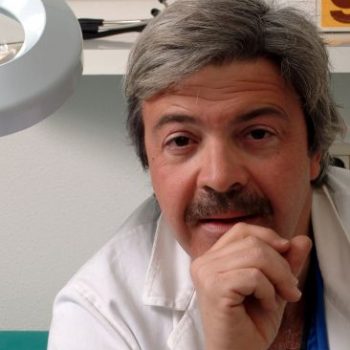Dealing with breast cancer requires the acceptance of more or less painful therapies and, in some cases, may also require the removal of part or the entire breast. This is a delicate step for a woman, both physically and psychologically. Thanks to the collaboration between reconstructive plastic surgery and aesthetic plastic surgery, however, it is possible to reconstruct this important part of the female body, while respecting the physicality of the patient, her sensitivity and her needs. How does the surgery happen? Is it really that important? We talk about this issue with Professor Marco Klinger, head of plastic surgery at Humanitas, a specialist in reconstructive plastic surgery who, together with his team, also works within the Breast Unit for the benefit of cancer patients.
Not all operations are the same
What does it mean to reconstruct a breast after a tumor? It should be noted that oncological interventions are different, as are the characteristics of patients and therefore each reconstruction is unique. In Humanitas, the reconstruction operation is part of the Breast Unit course directed by Dr. Corrado Tinterri. This center is dedicated to the diagnosis and treatment of breast cancer and accompanies women in all stages of the disease, including reconstruction, by bringing together different professionals, such as oncologists, breast specialists, plastic surgeons and psychologists. The cases faced by specialists can be many: from quadrantectomy, which involves the removal of only one part of a breast, to bilateral mastectomy, which involves the removal of both breasts. Then there is the so-called nipple sparing, a technique that involves emptying the breast with preservation of the lining tissues, i.e. skin, areola and nipple. The prostheses are placed under the pectoral muscle in this empty “sack”.
When and why is it appropriate to carry out the intervention
The decision on the type and timing of surgery is made by the breast surgeons and plastic surgeons together, taking into account the clinical and physical characteristics of the patient. “Having had a tumor means not only having had a disease, but also having suffered a trauma – explained Professor Klinger – a trauma that is important not to amplify with that of mutilation. That’s why we strongly support the need for reconstruction, in order to restore the patient’s initial condition. Rather than an aesthetic motivation, therefore, the reconstruction is supported by the evaluation of psychological aspects, so important as to influence the attitude towards the disease and, consequently, to contribute positively to the healing”.
In the case of nipple sparing, only one surgical operation is performed (oncological and plastic) with considerable benefits for the patient, who is not subjected to a double operation. In other cases, a second operation is performed a few months after the oncological intervention. To reconstruct, so-called devices (such as prostheses or expanders) can be used, or the remaining gland can be remodeled by removing only one breast quadrant, or healthy skin or muscle-cutaneous tissues taken from the abdomen or back can be used. With the lipofilling technique, the necessary amount of fat is extracted from the abdomen or hips of the patient by means of a suction cannula. The fat is then purified and transferred to the breast. Lipofilling allows recreating the volumes lost after the oncological intervention, contributing to the remodeling of the breast and to the improvement of the quality of tissues and scars.









